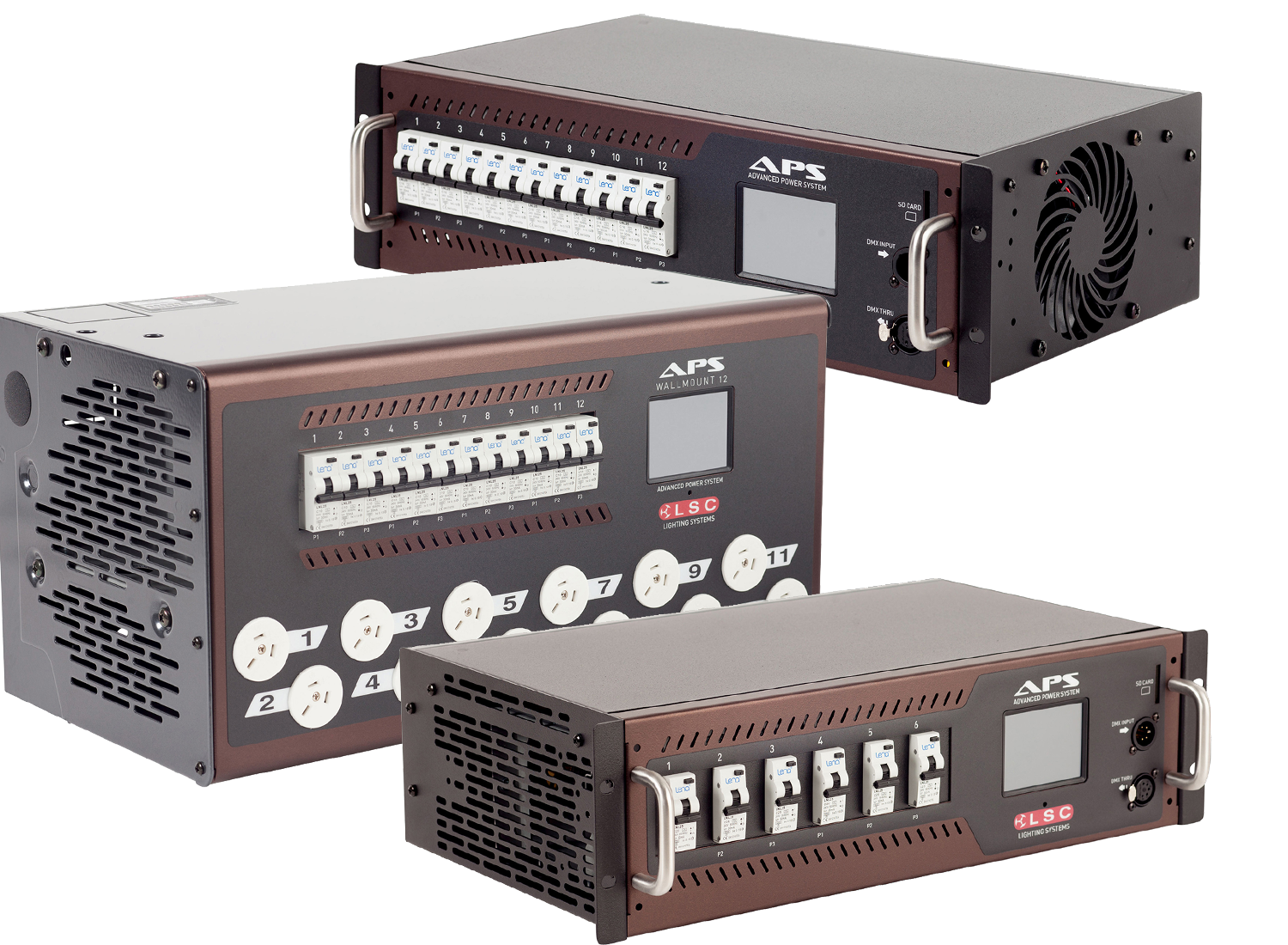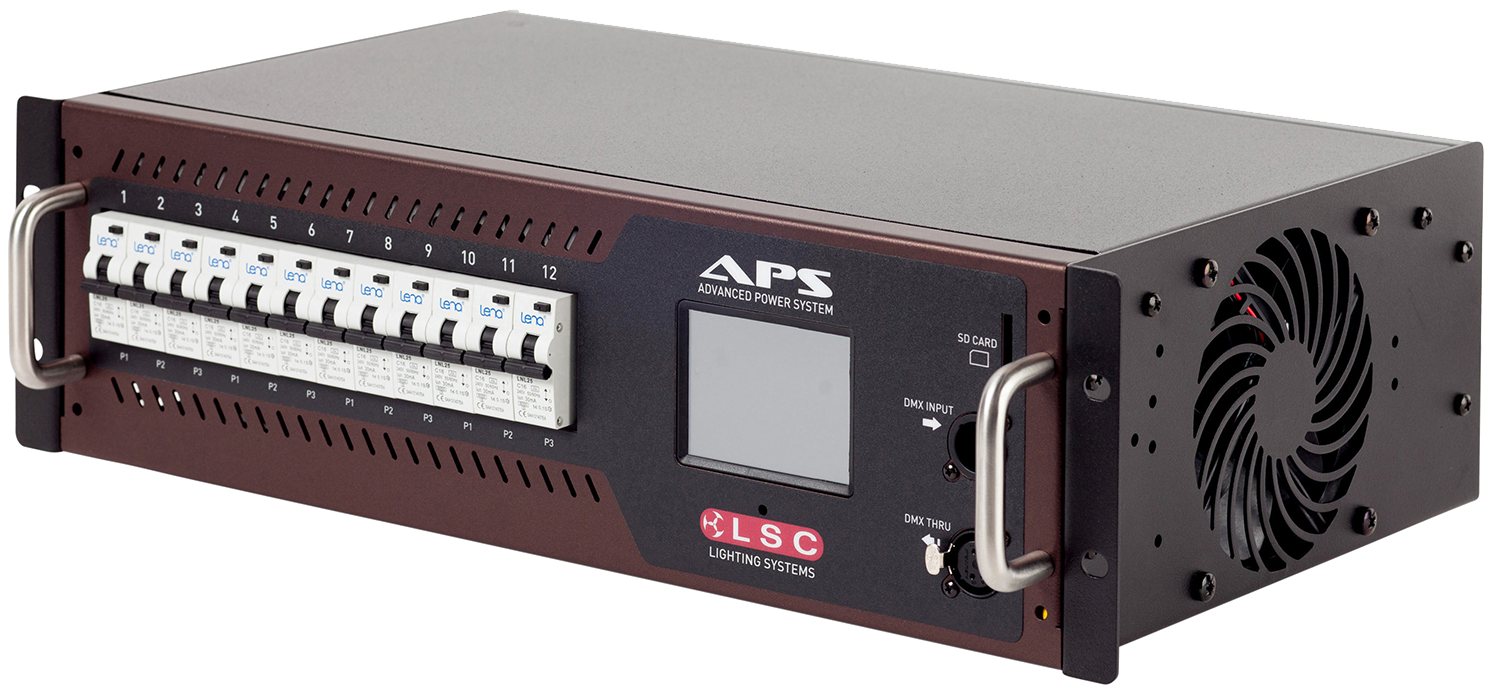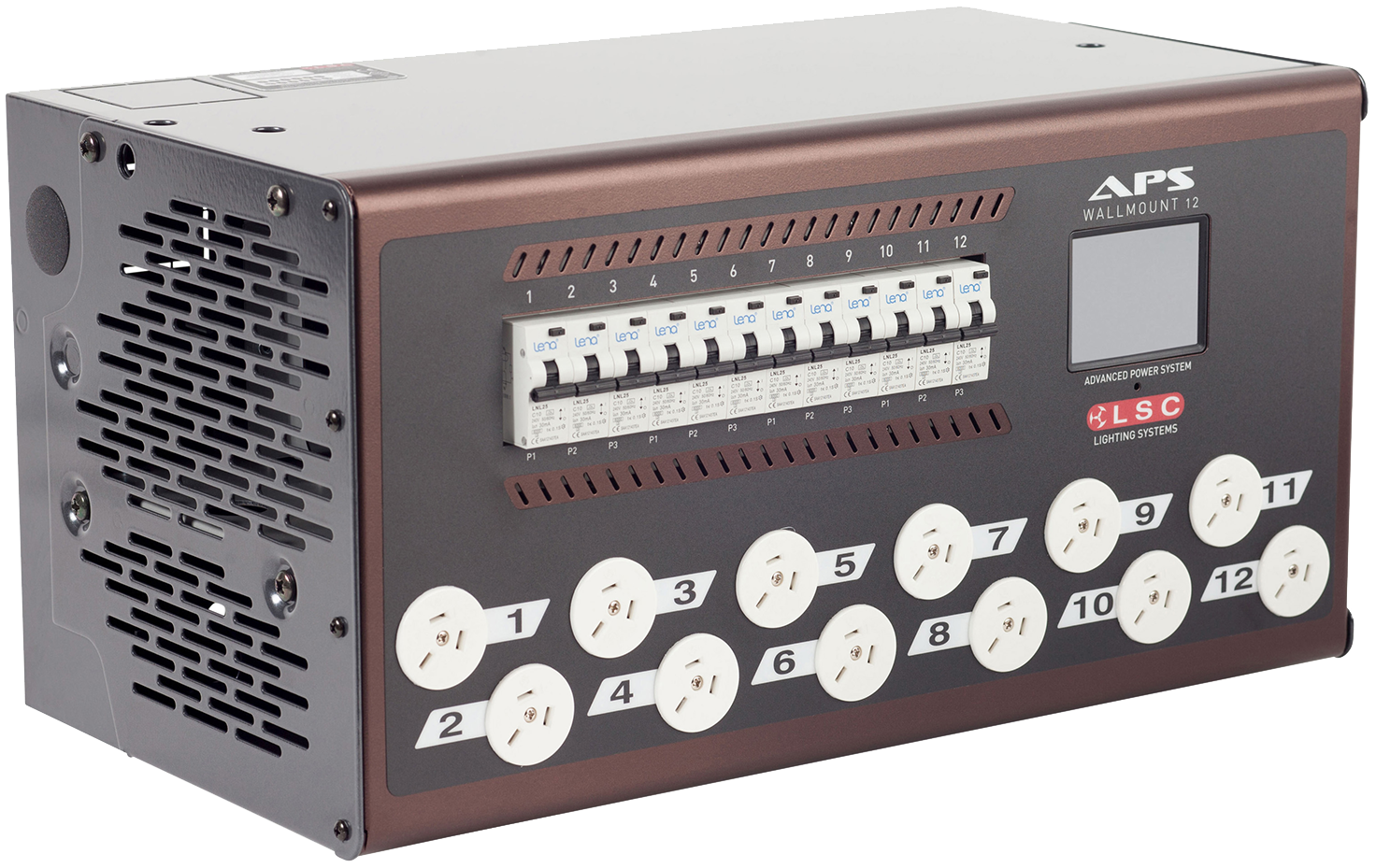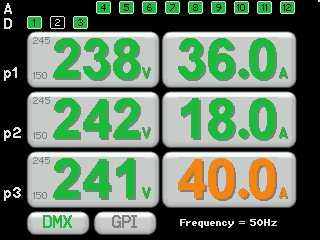
The money invested in today’s audiovisual systems is huge. The latest audio console, speaker array, LED wall, video projector and intelligent lights – all amass to serious amounts of money. Yet, do we invest in the right equipment to power and protect this investment? From the stories we’ve heard, obviously not!

LSC Control Systems recognised this shortfall and reacted by redesigning its power distribution range to be more intelligent and accountable to its purpose; to distribute power to a vast array of equipment and protect the equipment from the potential problems encountered when running large rigs. The APS (Advanced Power System) is the result of a lengthy research project. We consulted some of the world’s most experienced system engineers and venue operators to identify the most common problems associated with Power Distribution Units (PDUs).
One of the biggest issues highlighted (and potentially the most expensive) was “dropped” neutrals on the mains supply. If you connect your video, lighting or audio rig to power and turn it on and the neutral is missing, you can potentially receive 415V across all connected devices and the result can be catastrophic. The APS is designed to run at 415V without causing damage. When it powers up, it does not energise any of the outputs until it has measured the voltages on all phases and checked they are within safe working limits. If they are, it powers everything on, if not then it will not power on the outputs (no matter what you tell it to do) and instead displays a large error message. Similarly, if the neutral fails mid-show then the APS will disconnect power within 50mS, therefore minimising damage to attached equipment.

The problem with many new devices (video walls, LED fixtures, moving lights) is that the switch mode power supplies inside them all have two forms of inrush current. There is the old one we all know, where a 1A PSU draws 3A to 4A momentarily on power-up but there is another one. These power supplies also leak a few mA to earth momentarily. If you have more than a few devices connected to a single RCBO (combined MCB and RCD) then it can nuisance trip when you turn it on, either from current overload or from earth leakage overload. The APS minimises this by always turning on the relay as the mains voltage passes through zero volts (as it does 100 times a second), providing a pseudo soft-start as the voltage ramps up to 240V in the natural sine wave. This reduces the chances of an earth leakage or current overload inrush allowing a 10A ‘C’ curve 30mA RCBO to be used, providing the highest level of safety and the lowest chance of nuisance tripping, where other PDUs may require a 16A or ‘D’ curve RCBO to achieve the same result.
The APS is a programmable PDU. To overcome the issues mentioned previously, APS powers up each output circuit individually, with a short delay in between. Inrush and leakage currents are limited, preventing any upstream RCD or MCB breakers from tripping. This staggering of the power-up sequence is programmable from the front panel – with a setting from 0.1s to 5s of delay between outputs being energised. If the requirement is for more than 12 circuits, then any number of APS units can be linked and each given an identity number. They will then start sequentially; that is unit 1 will turn on its outputs in sequence and when it has all circuits powered on, unit 2 will start switching its outputs on, followed by unit 3 and so on. It doesn’t always require a controller to be connected to complete this auto start-up, it can also be set up from the menu system on the front-panel colour touchscreen.
The APS makes the use of generators at events less prone to potential issues. The APS measures both incoming voltage and frequency and uses this information to delay the power-up sequence until they have stabilised. As the power-up of the loads is completed sequentially there is no sudden change of load presented to the generator which increases the stability of the output.

The range utilises RCBOs throughout ensuring the highest level of safety and electrical compliance. The RCBOs provide a 30mA RCD and disconnect both the active and neutral protecting the load even if there is a phase/neutral swap.
These are smart PDUs, so their ability to network in modern control systems is essential. Control can be from DMX512 controllers connected to the XLR input, remote third-party controllers via a voltage free contact closure or by front-panel menu system. Remote configuration and monitoring are achieved by Remote Device Management (RDM) over the DMX512 signal or via LSC’s Houston X software.
The APS is available in a number of formats – 19” rackmount housing for free-standing or flight-case mounting and a wallmount version for more permanent applications. Outputs can vary from 12 circuits of 10A, 12 circuits of 16A to 6 circuits of 25A with a wide selection of output connector styles.
Investing in the LSC APS means you don’t need to spend a lot of money to insure your expensive audio, video or lighting rig from bad power.